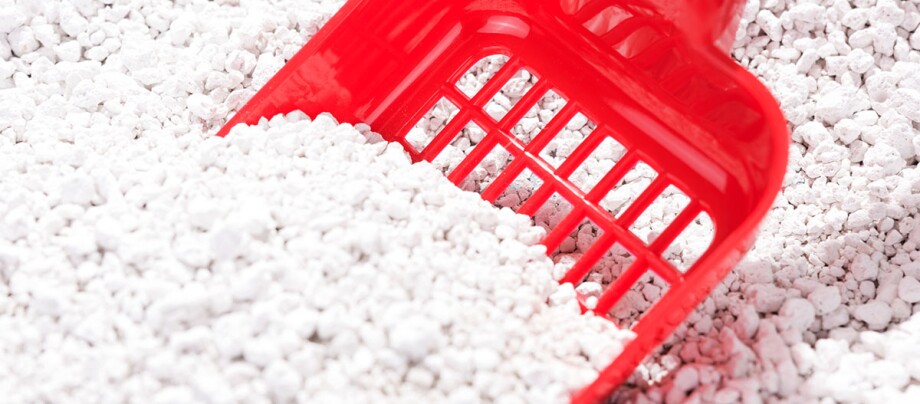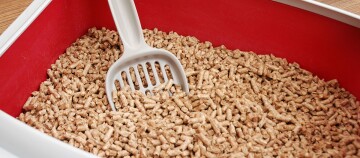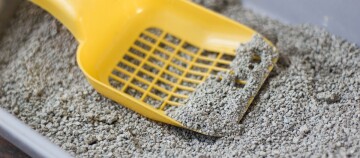Cat Litter Tips You Need to Make Your Feline Friend Comfortable
14.11.2022 - Reading time: 5 minutes

Cats are known for their personal hygiene. Dogs could learn a thing or two from their toilet habits: Once the cat has done its business, it discreetly buries everything. What an outdoor cat does quite casually is more difficult for an animal that is kept indoors, because there are no soft surfaces. As a cat owner, you can help out with a litter tray full of cat litter. But: what toilet paper is to humans, litter is to cats. The choice is huge and there are lots of brands and materials. Which cat litter should you choose?
How long has cat litter been around for?
Cats need to dig in order to hid their excrement. This has nothing to do with shame, but is important for discreetness. Cats instinctively hide their leavings so that neither fellow cats nor enemies will notice them. By burying it, the smell of the faeces is difficult for other animals to detect. When cats are kept indoors – sometimes exclusively – the problem of finding an adequate replacement solution becomes just that much more urgent. The solution was found in the 1940s by the American, Edward Lowe: He had the idea of offering cats a mixture of bentonite and compound silicate. The new granulate was accepted well by animals, which previously had to make due with a mixture of sand, sawdust and ash. This made Lowe to the secret hero of every cat house-cat owner as the inventor of the modern kitty litter. The original mixture was in fact marketed as “Kitty Litter”; the company Lowe founded then has since been absorbed into the company, Ralston Purina.
What is cat litter made of?
Lowe’s basic litter made of silicate and mineral components is still the basis for most kitty litter products. However, the product range has increased.
Which cat litter is recommended for kittens?
When you have kittens in your home, for safety reasons (and also if it temporarily annoys the mother cat) you should not use normal clumping litter with bentonite or silicate litter but instead switch to an organic litter. The reason: kittens are curious and explore the world with all of their senses. That also means that kittens might get it into their heads to see if the litter tastes good. Clumping litter that is accidentally swallowed can be dangerous to their little bodies. Wood or plant fibres are not particularly healthy for little cats, but they are significantly less dangerous and completely digestible. As soon as the kittens have learned not to eat from the toilet, it is possible, if you wish, to slowly switch back to the normal litter.
Why does my cat eat cat litter?
If you discover your cat eating the litter – and it is not a matter of a kitten who doesn’t know any better – then you should be concerned. Aside from the mechanical irritation of the gastrointestinal tract, the organs are also threatened due to the absorption of water by the swallowed litter. Furthermore, the litter can clump in the intestines and lead to life-threatening blockages. The purposeful consumption of litter can also be a warning sign that the cat is suffering from a mineral deficiency and is trying to balance the minerals in its body by eating the litter. In cases of deficiencies, many animals instinctively begin to eat available replacement sources of what they lack. If, therefore, something seems strange to you, pay attention to any further signs of anaemia, for example very pale gums and light-coloured conjunctiva. An infestation with endoparasites such as flatworms, hormonal disorders or diabetes can also cause cats to suddenly begin eating litter. If you find a reason to be concerned, you should definitely have your cat checked by a vet to see whether there is a deficiency or other illness. In many harmless cases, eating litter is just a bad habit that the cat has picked up, possibly due to boredom or stress. If it is just a bad habit, you may want to switch the litter to a safer, plant-based variety and make sure that the cat has plenty of activities to keep it busy.
What types of cat toys are there?
Mineral litter
Mineral litter consists of various clay minerals which can absorb significantly more liquid than pure sand. The disadvantage of mineral litter is that is has a comparatively lower ability to bind odours.
Silica gel litter
Silica gel litter is made of a porous material that can absorb a considerable amount of liquid. The trick is that the silica gel binds urine components and odours while allowing the moisture to evaporate. That way, the kitty litter stays dry and does not have to be changed as often. However, the litter components are so light that long-haired cats can also drag it with them all over the home. Silica gel is common in every day use for moisture protection: You often find little paper packets in new leather products with the words “Do not eat” – these are filled with silica gel.
Litter made of organic materials
Litter made of organic materials consist of wood fibres, pellets or maize straw combined. The biggest advantage of organic litter is the environmental aspect: the material is 100% biodegradable. Plant fibres can also bind moisture well.
Mineral clumping litter
Mineral clumping litter is a further development of the mineral litter from the 1980s, though the composition of the materials used has changed and more bentonite has been added. If the clay material becomes damp, it turns into a clay-like, bound consistency – you may recognise this from your pottery class. This clay can easily be removed from the cat toilet. This saves material because the entire litter does not have to be replaced.


